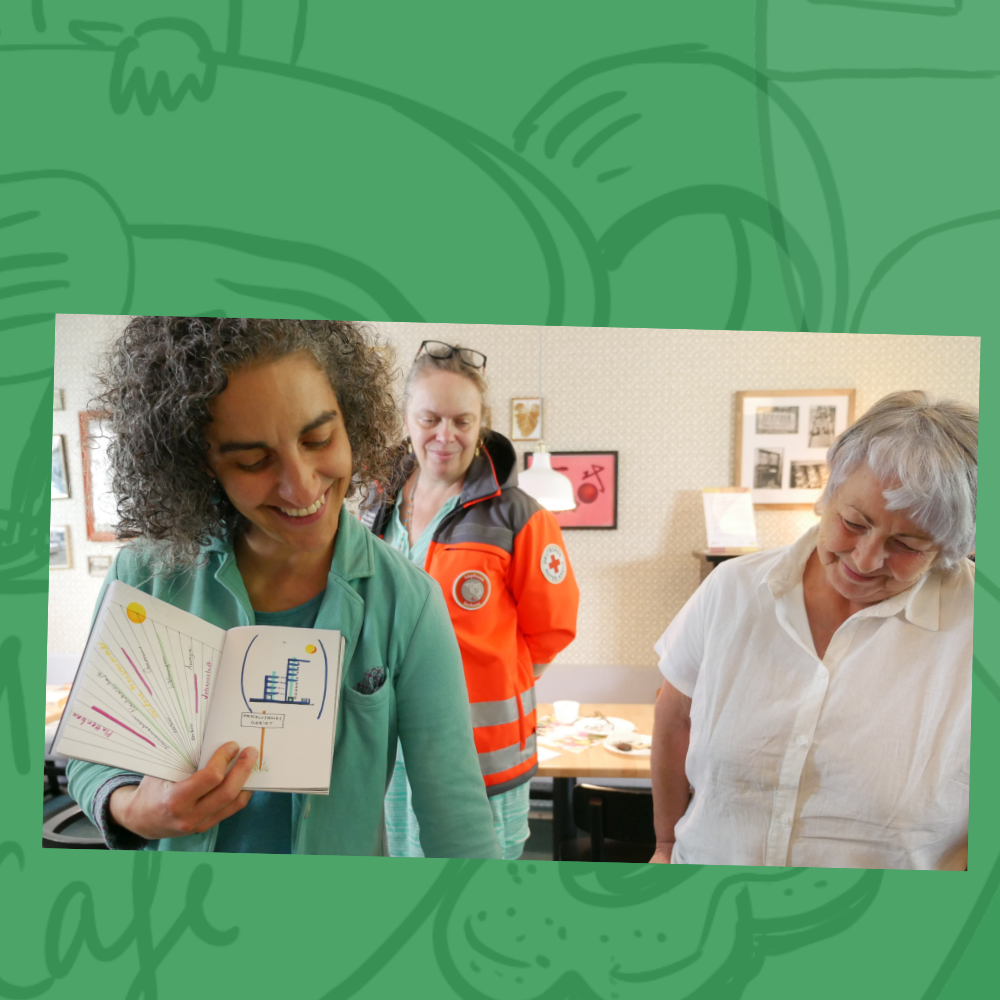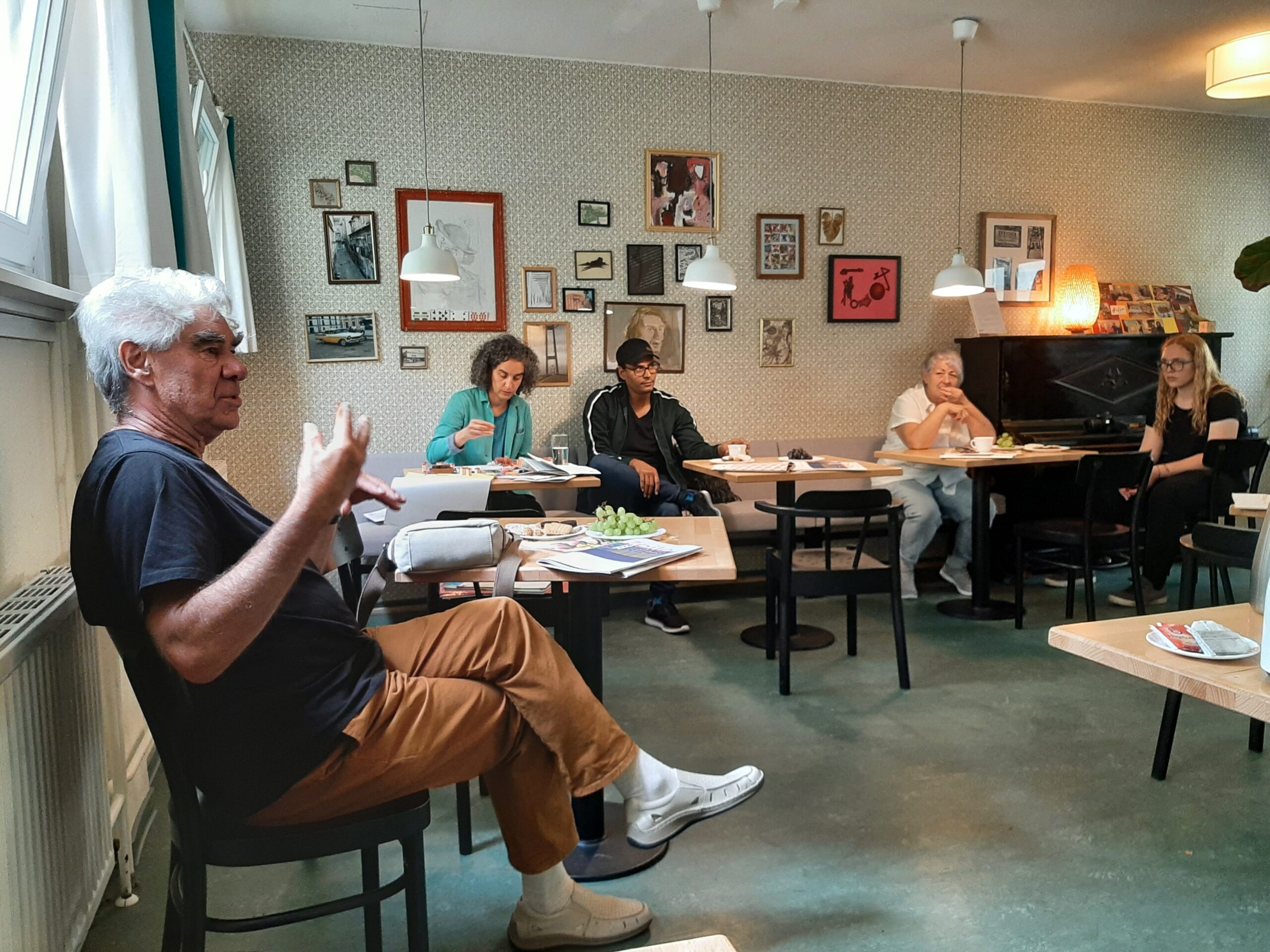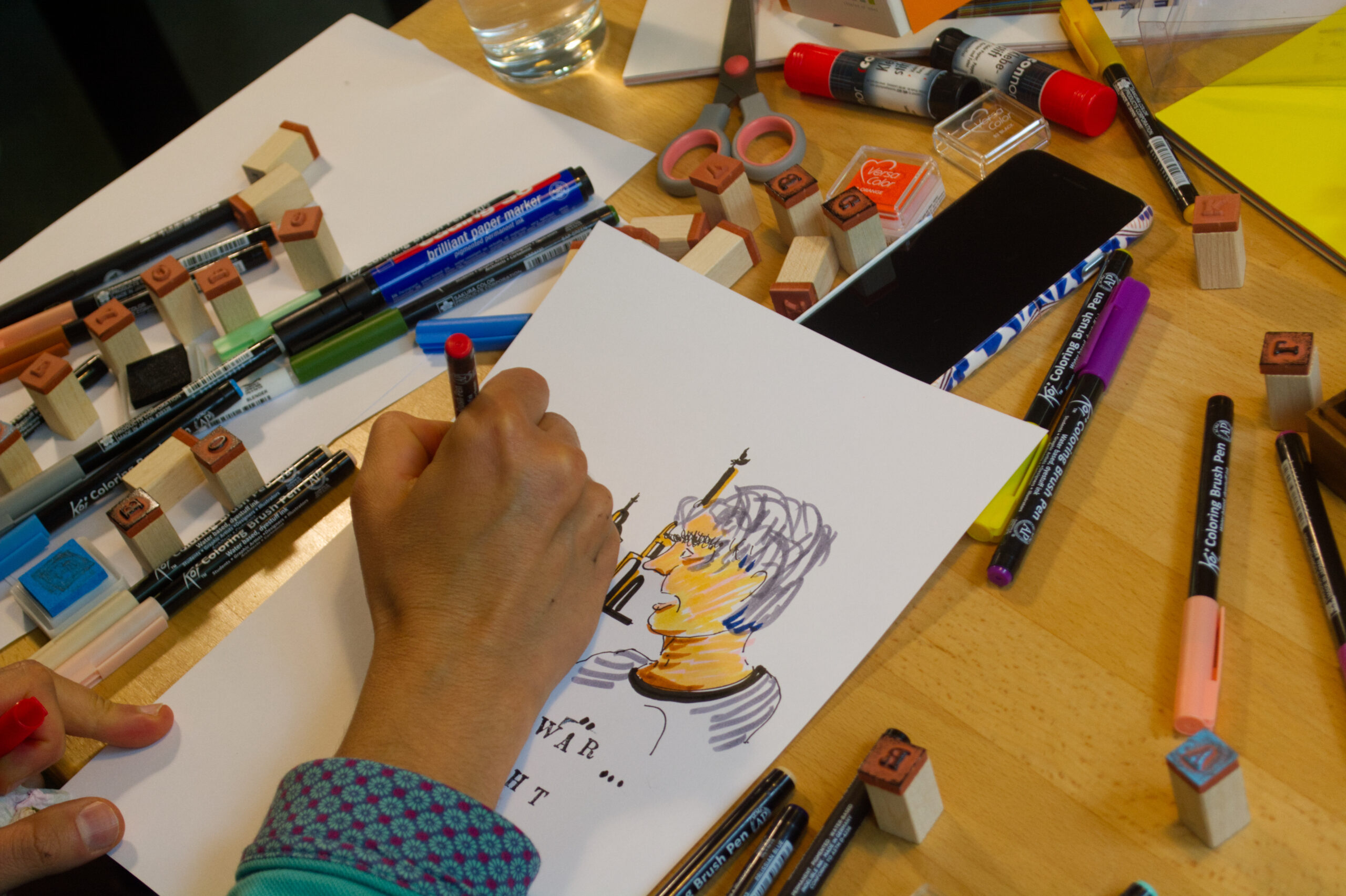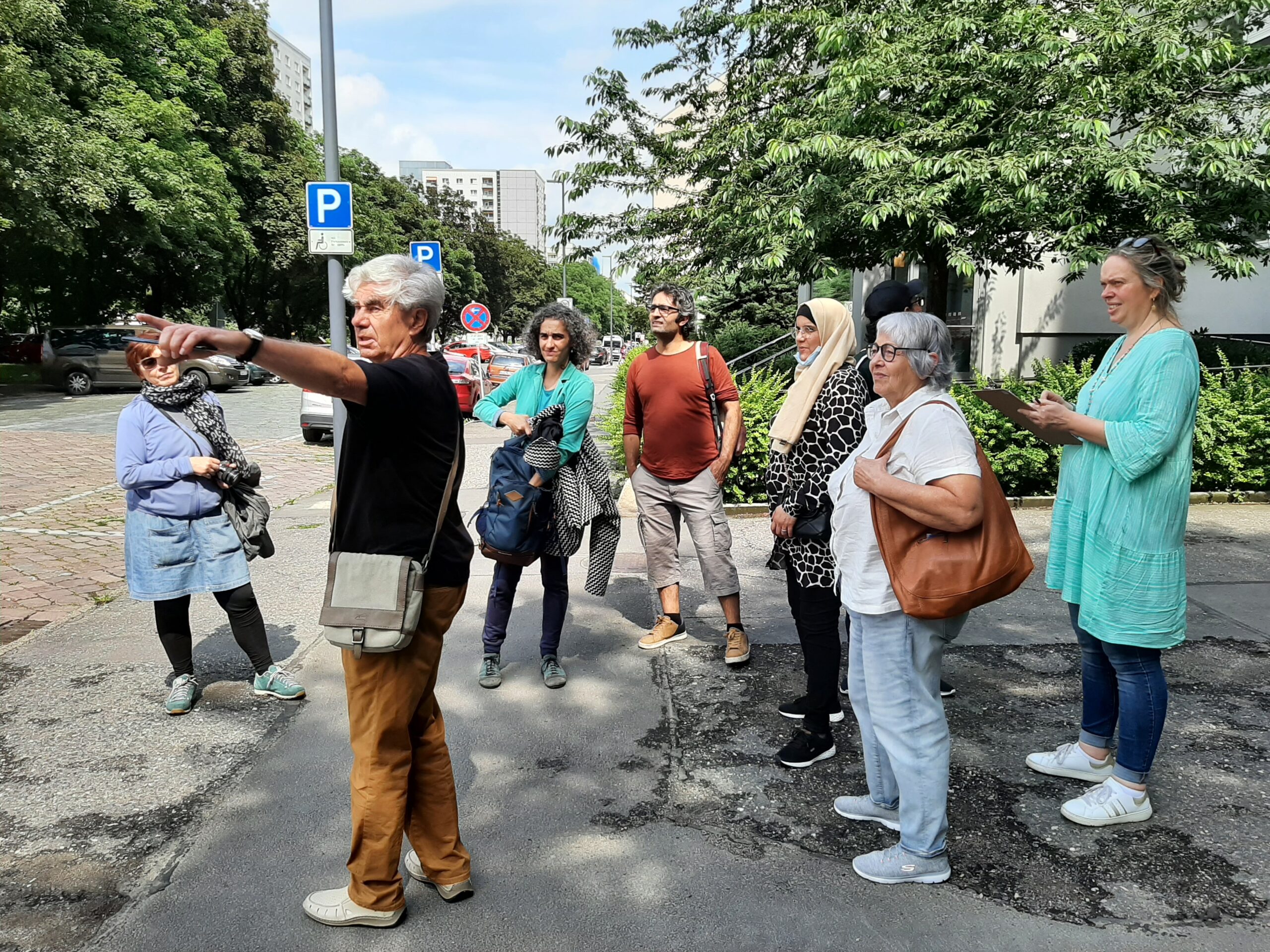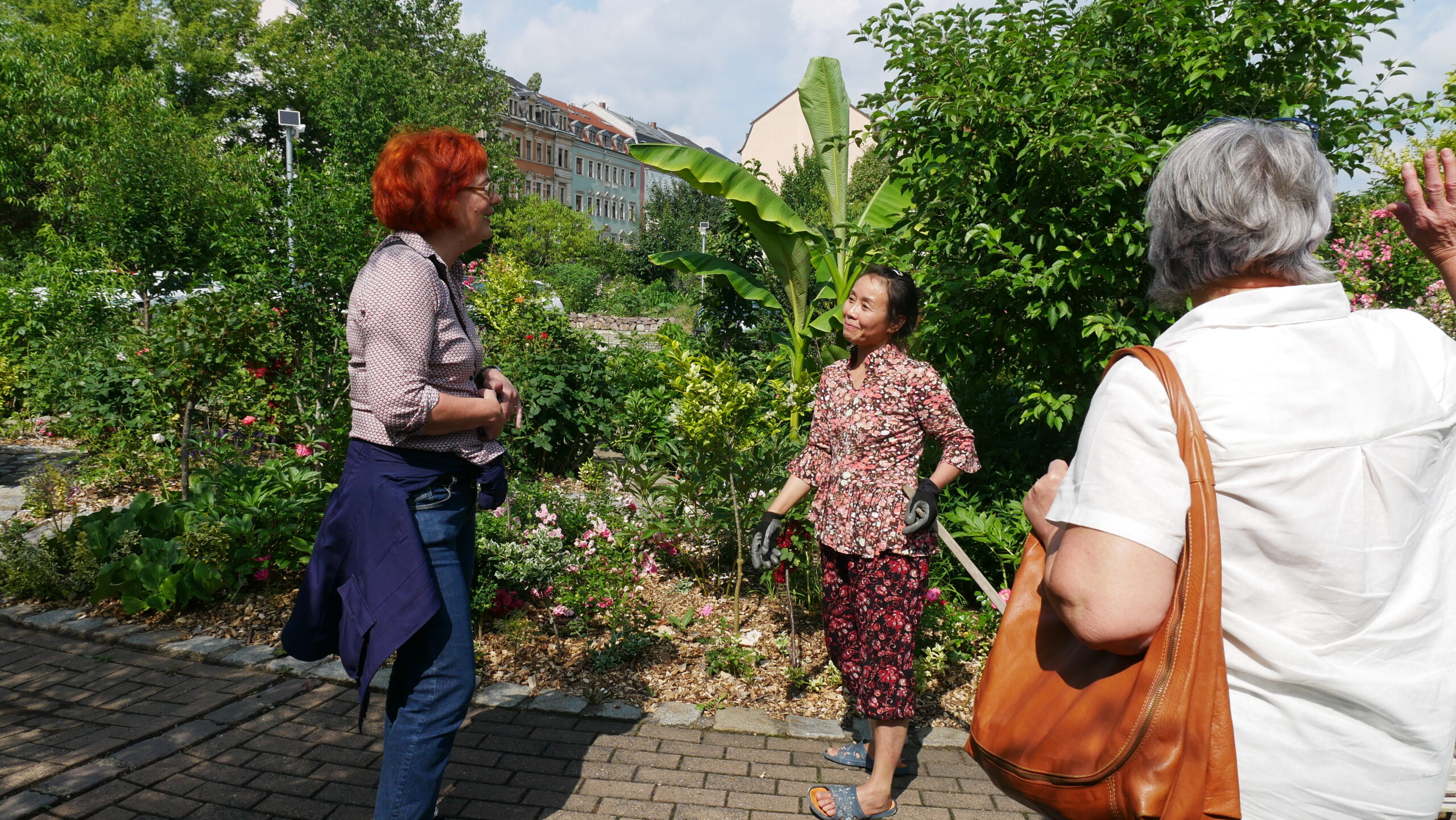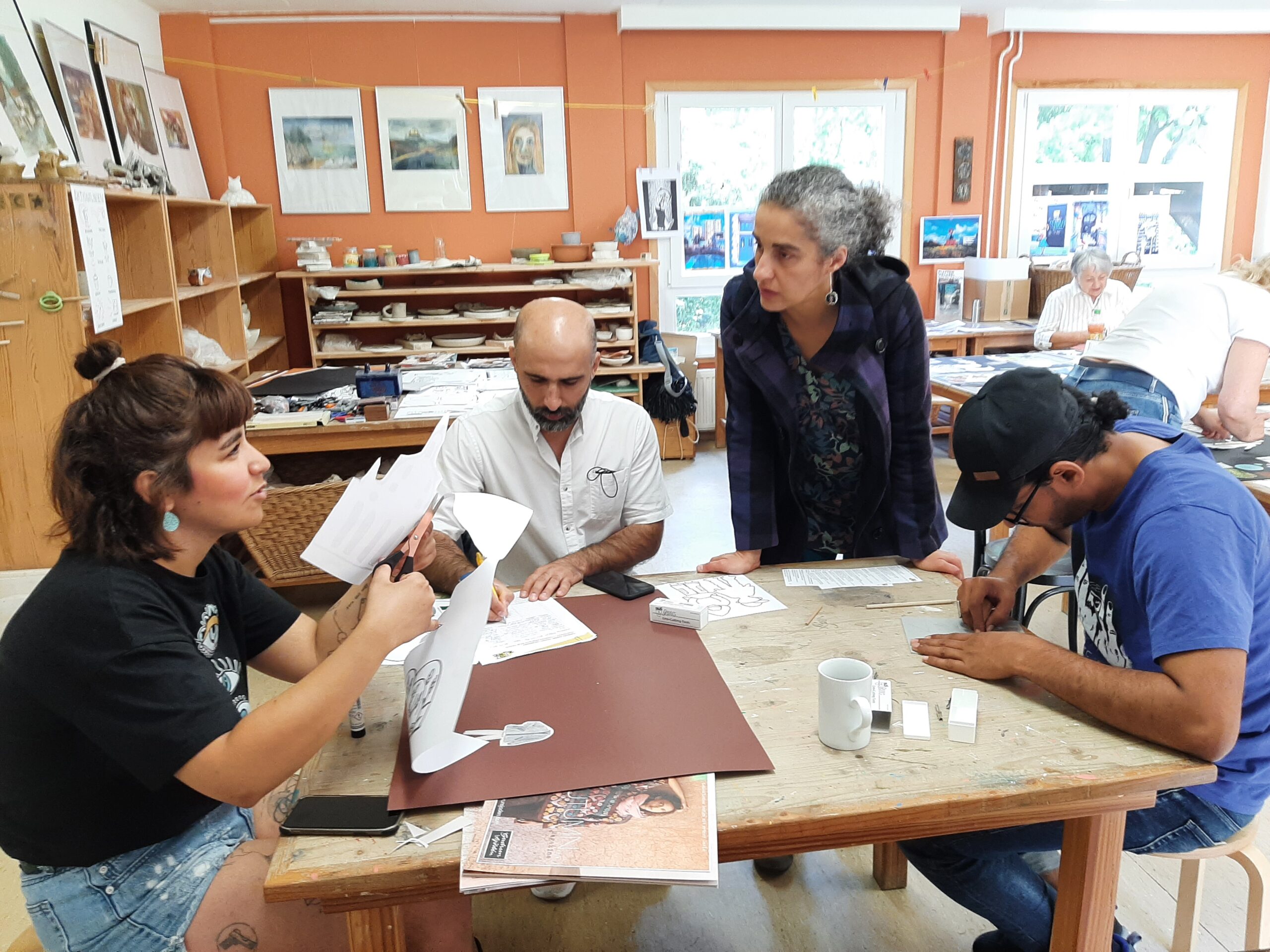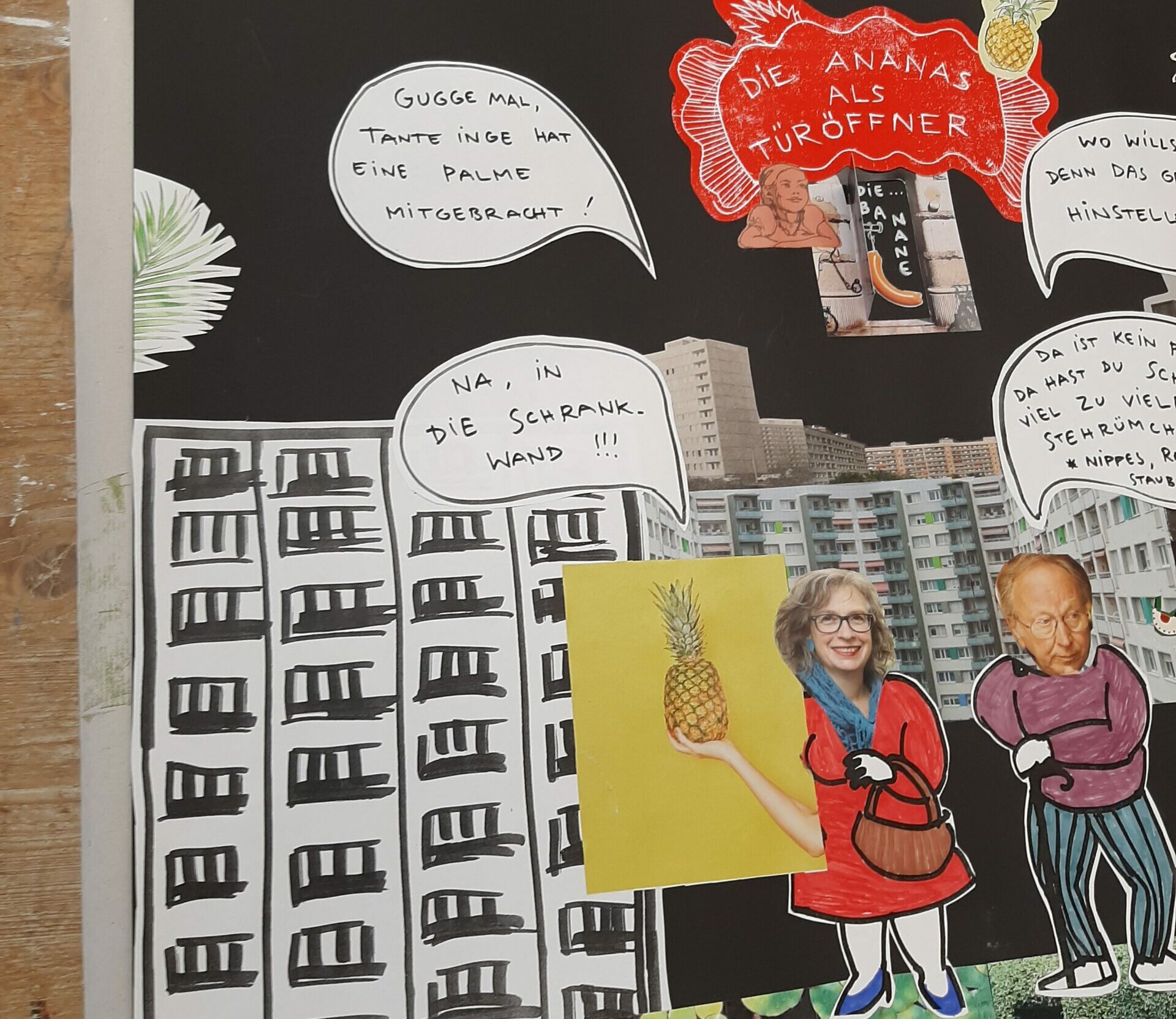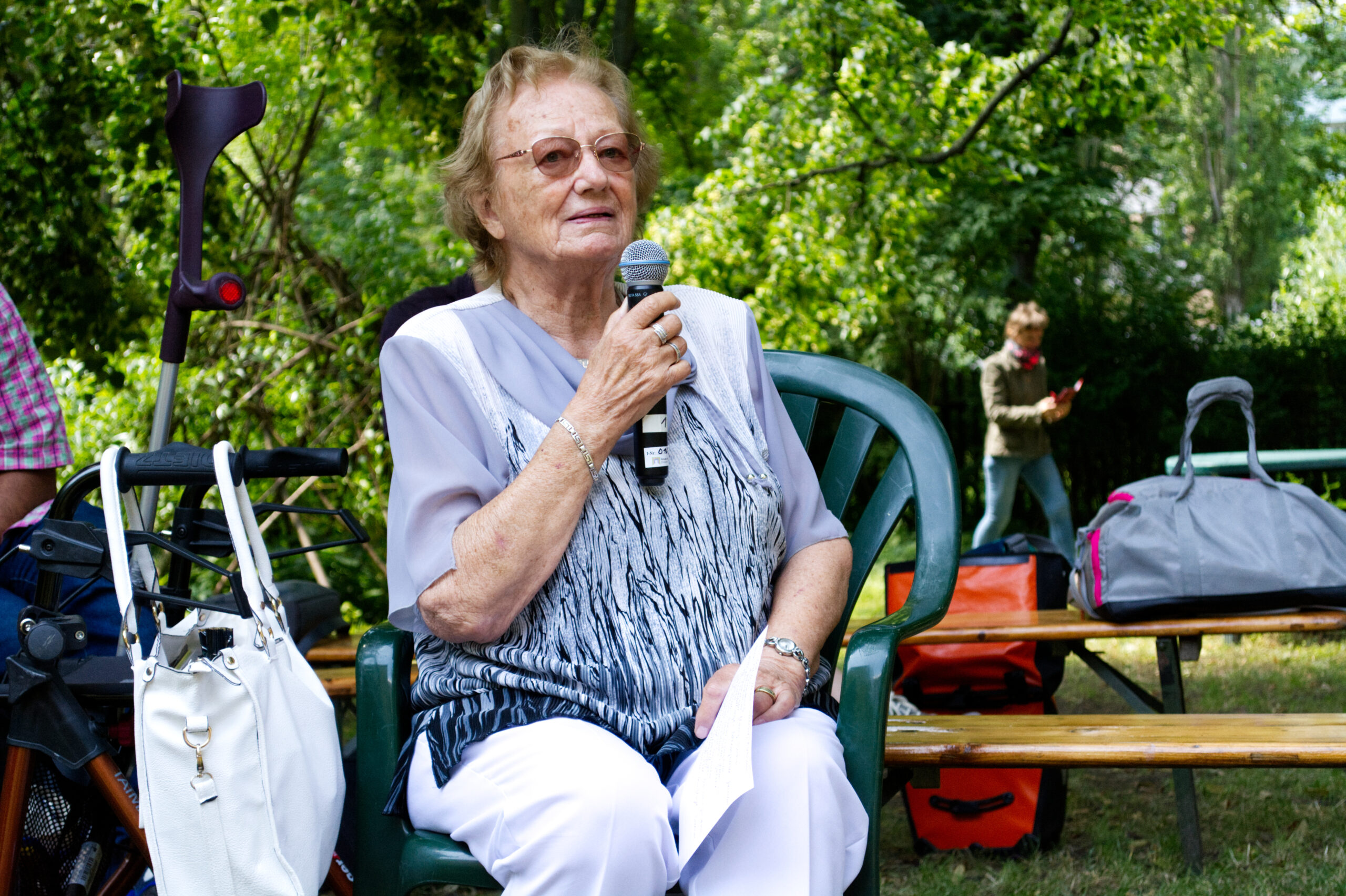The Treffpunkt ostZONE events in Gorbitz took place in cooperation with Johannstädter Kulturtreff e.V. and Plattenwechsel – WIR in Aktion .
02.07.2021 – Market café
„Living in Johannstadt“ with the artist Nazanin Zandi
A destroyed city district. 80% of the houses disappeared during the war. New planning. Wolfgang Hunger tells about. The wasteland. The development in 1972. Prefabricated buildings. The editors of the district magazine ZEILE add. What distinguishes Johannstadt? The long apartment blocks. The colors red and orange. Do you remember the Elisencafé? No, but we do remember the shopping mall. And the student dormitory. Russian neighbors – members of the army. Cosmopolitan. At that time. And today? Inge from Ukraine. A late repatriate. In Johannstadt for 14 years. Good neighbors. International gardens. Maryam from Libya. Since 2015. Well settled in. But strange looks. Talking to each other. Questions.
Nazanin Zandi records what she hears. Concentrates on the essentials. The statement. She gives a face to the voices in and from Johannstadt.
Nazanin Zandi: Small graphics
“At the market café in Johannstadt, I was very impressed by the biographical memories of those present. Wolfgang Hunger talked about his youth and his time as a worker in the panel factory at that time. He was responsible for tiles and inlays, this I have drawn in the graphics. And he told us about his childhood, about tanks on bridges and about the “restricted areas” where contract workers lived, separated from the GDR reality that took place outside.
Maryam took us on a tour of her Johannstadt. She was a chemist in Syria and would very much like to continue experimenting and participating in research in Dresden. I learned that there was an airfield on the Elbe, saw photos of it. I heard a lot about the cemetery and the Vietnamese caretakers of the International Gardens. It was educational and emotional.” (Nazanin Zandi)
02.07.2021 – District walk
„Living together in Johannstadt – GDR and today“
with Maryam Aboubakr, Wolfgang Hunger and the artist Moussa Mbarek
Maryam Aboubakr and Wolfgang Hunger take us with them. Their district. The main post office. The architecture. The Rusmarkt. Shopping for food. Leisure time. The clubs. The Johannstadt Hall. New senior residences. Hardly any people on the road. Friday afternoon – is everyone in the gardens? Wonderful Vietnamese garden. Thien Hoa Minh takes care of it. There is only one in Dresden.
Travels all the way from Düsseldorf. He carries watering can after watering can and laughs. On to the Trinitatisf cemetery. Many Dresden personalities. Back to the Johannstädter Kulturtreff, past new university buildings and shopping markets.
The artist Moussa Mbarek likes doors. Passages. New worlds. Participants note a special door along the way. Photo on the phone. Creative implementation at the workshop. Postcards are created. Door postcards. Symbol or entrance to a house?
Moussa Mbarek: Printed poster with collages from participants
“Under the theme “Windows and Doors of Life” we began our district walk through Johannstadt. Everyone was asked to photograph special places, windows and doors. The walk led us past industrial wastelands and through gates into enchanting gardens. We were accompanied by questions about our own closed or opened doors of life. A look out of the window of the “now” into the future that still lies ahead of us.
We formed these impressions into collages in postcard format. Encounters developed which formed the basis for the following biography art workshops.” (Moussa Mbarek)
10. & 17.07.2021 – Biography Art Workshop
Two workshop days with the artists Nazanin Zandi and Moussa Mbarek
Day 1 The workshop at Johannstädter Kulturtreff offers space. Well equipped. Many scissors, linocut press. In one corner space for the printer. And a long table to spread out. Drying the linoleum prints. Occupation with one’s own biography includes the future. Where should the path lead? Here in Dresden. Talking. Telling. Listening. Nazanin Zandi encourages to develop pictures. On thick, colorful cardboard. Silence. Concentration. Standing up, gathering material. Depicting Dresden, Frauenkirche, Johannstadt. With family or alone? The family lives in another country. Susanne is preoccupied with anonymity. The suffering, the loneliness of the neighbors. Not looking. Dresden of the future becomes more human. Sayings are added with speech bubbles. Moussa Mbarek is a specialist in linocut. The linoleum plates are ready. Gray. Cutting a negative pattern into it with the tool. The doors of Johannstadt. Admission to a colorful world. What gives strength in everyday life? Wishes. Health. Magic? Christine thinks of her childhood. Her favorite doll. Security. Conversations. Who had which toy? Dramas at the loss. Regina is on home leave. Tells about life in a foreign country. In Shanghai. Sorting out everything before emigration. Sharing. Writing. Postcards. Postcards? Create them yourself. Summary of life. Wishes. Greetings from Dresden. Painted A5 papers. Yvonn operates the printer. Colorful cards as a result. Joy.
Day 2 Many new participants. Curiosity. A whole day for one’s own life. Biography work. Presentation of possibilities. Letters to oneself. Letters to tomorrow. The most important thing in life. My wishes. The greatest fears. Mahsa writes. Susanne writes. Inge writes. The children write. The men don’t. Nazanin shows ways to make the envelope. A biography envelope. Concentration. Moussa oversees the linocuts. OstZONE. Ibrahim asks. Explanations. East Germany. GDR time. Brother states. Kurds? Long talks. Peace. Peace symbols. Dresden at peace. Founding a family. Personal happiness.
On long lines hang the linoleum prints to dry. Colorful. Many stories. Much present. Much future.
Moussa Mbarek: Collages and linoleum printing
“Following personal impulses, we worked together with Nazanin Zandi to create collages that took on a special life through the form of comics. In addition, we used the method of linoleum printing to make events and experiences visible. This is because linoleum printing works just like memory: only the raised parts of the printing plate are printed.
In the second part, everyone could create a letter to the future. Written, collaged, printed. Everything was possible. The focus here was in the area of inner confrontation with questions such as: Who am I? What makes me who I am? What hopes and goals do I have? What will the future hold for me?
The time was too short to do justice to the variety of stories and conversations between the participants. Susanne told about the day when a loud scream sounded behind her friend’s shared apartment door. She had slept through the fact that the Wall had fallen. Another visitor left Dresden and went to Shanghai. She found happiness there. Another visitor’s dream was his mirage of meeting a beautiful woman on the beach. Another carved the memory of his girlfriend, who is still in the homeland. His look back and his wish for the future.
For me, it was a glimpse of a country I don’t know and an encounter with my new neighbors. A place where everyone was the same and we could understand each other through the pictures.” (Moussa Mbarek)
03.07.2021 – Podium discussion
Russia/Soviet Union – big brother? with Heidi Bohley (Independent Women for Peace, New Forum), Evelyn Harz (Teacher Romain-Rolland-Gymnasium, former EOS “Romain Rolland”), Igor Eidman (Sociologist, Chairman Forum of Russian-speaking Europeans e.V.)
Moderation: Marcus Oertel | Live-Visualisierung, Dokumentation: Antje Dennewitz
Evelyn Harz: Studies in the Soviet Union. Poverty. Cold. Dead babies in hospitals. Life in a dormitory. Cuban neighbors. First love. Emigration to Cuba. Return to the GDR. Heidi Bohley: impressed by the Prague Spring. 1968. tanks. Silent and loud resistance in the family. New forms of communication with her sister Bärbel. Women for peace. Igor Eidman: different times in Russia. The intelligence. Dissolution of the Eastern Bloc. The Crimea. Exile. Life in Germany and connection to the Russian-speaking community. Distinction between government/politics and the people. Recollections from the audience: everyday encounters with Russians. Getting along well. Talked with Putin. Have enjoyed going to Russia since the reunification. Other voices report on ban on contact, draconian punishments for Russians in case of disregard. Poverty in the barracks. Rags on the feet. At the end of the conversation, many thanks. When is the next event? Antje Dennewitz records the questions and memories as a graphic recording.
The project Treffpunkt ostZONE. remember and shape is supported by the House of Resources Dresden +. This measure is co-financed with tax funds on the basis of the budget passed by the Saxon state parliament within the framework of the state program Integrative Measures.

